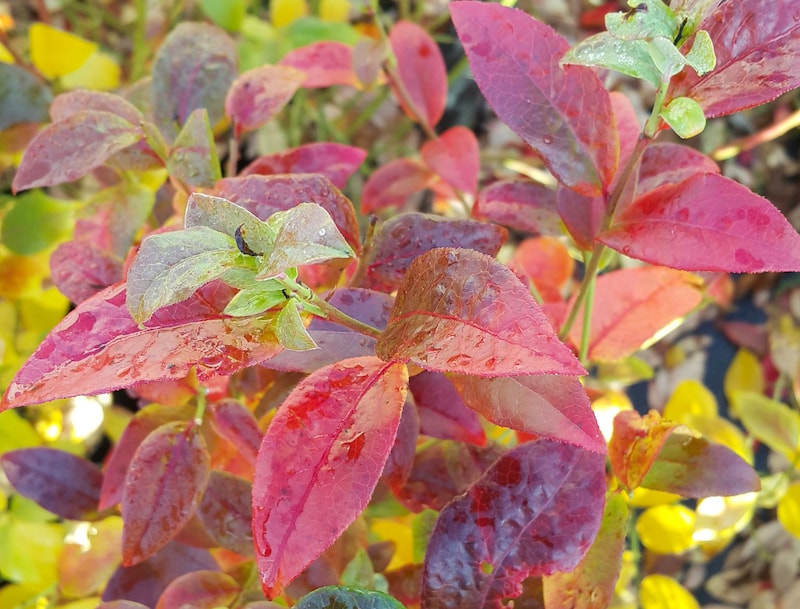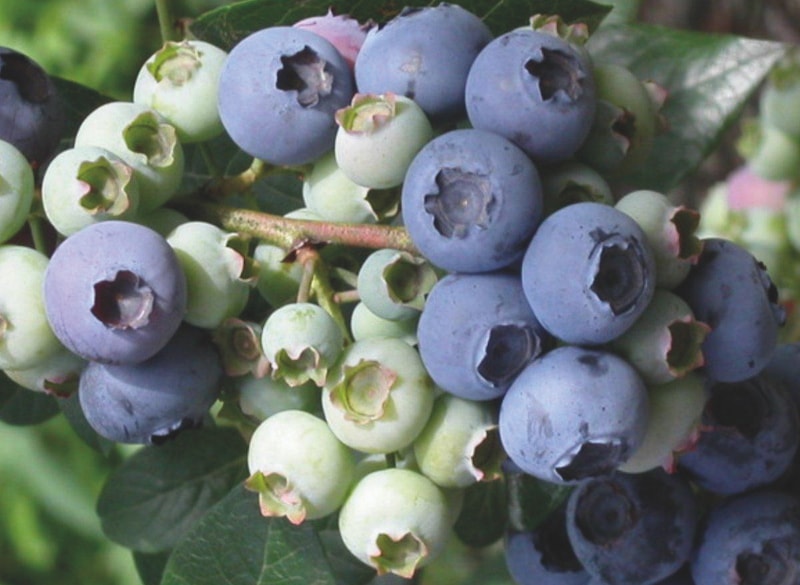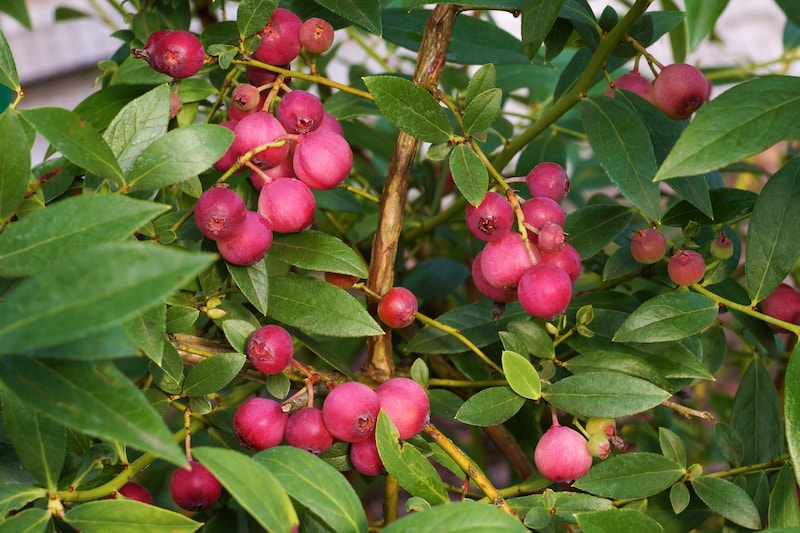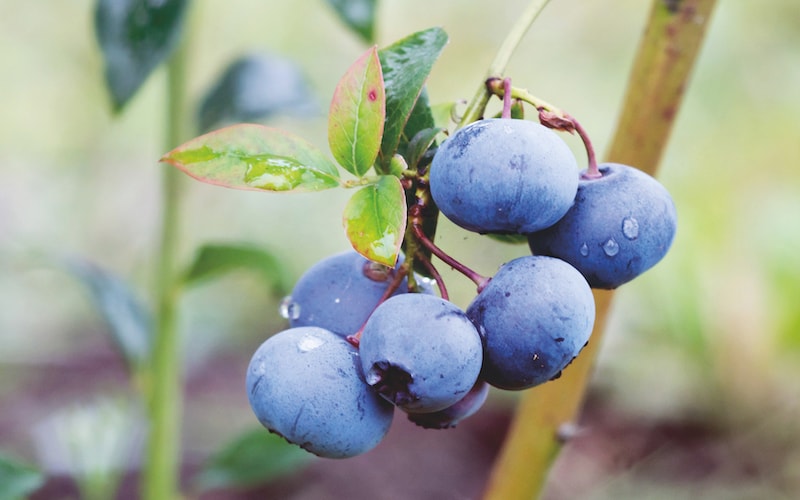Well known as a nutrient-rich superfood, blueberry plants are relatively easy to grow and provide a ready supply of an otherwise expensive fruit. Whether you choose to grow them in containers or plant them in the ground, here are a few tips to help you enjoy bountiful crops of juicy blueberries.
The best blueberry varieties
Wild blueberries (Vaccinium myrtillus), also known as European blueberries or blaeberries, produce delicious fruit just like their American cousins. The only difference is the wild blueberry has true blue flesh, and grows wild in the UK in acidic forests and peaty moorland. Sow wild blueberry seeds in trays of ericaceous soil to have a go at growing your own native crop. Reaching a height of 30cm, they’re ideal for window boxes.
Commercially grown blueberries are often cultivars of the American blueberry (Vaccinium corymbosum). They’re tall, woody, deciduous bushes that produce large plump berries. American blueberry varieties flower in spring and feature beautiful autumn leaf colours after fruiting in September. Some of the most popular varieties include:
- ‘Pink Lemonade’ – pink flowers in spring develop into sweet pink fruits in August and September. This variety grows to a height of 150cm.
- ‘Pink Blueberry’ – pink/white flowers in spring are followed by fruits that ripen to a dark glossy pink in the summer.
- ‘Earliblue’ – a variety that fruits from early July with a height and spread of 180cm.
- ‘Bluecrop’ – good for small gardens and ideal for large pots. This August-fruiting variety reaches a height of 120cm and spread of 90cm.
- ‘Berry Bux’ – a super compact variety that reaches a height and spread of 50cm. Plant in containers or as a low-growing hedge in the garden.
How to plant blueberries

Image: Blueberry ‘Berry Bux’ from Suttons
Blueberries need acidic soil to thrive. If you have rhododendrons or azaleas thriving in your garden, your soil is likely to be acidic, but you can use a pH testing kit if you’re not sure. Simply choose a well-drained spot in full sun or partial shade that’s sheltered from prevailing winds.
If your soil is heavily alkaline, you can still grow your own blueberries. Choose compact varieties and plant them in large containers with plenty of drainage holes. Fill the container with ericaceous compost, letting it settle a few inches below the rim of the pot to allow space for watering and adding mulch.
If your soil is neutral, it’s fairly easy to increase the acidity levels by mulching with a mixture of acidic pine needles or conifer clippings and ericaceous compost.
To plant your blueberry bush:
- Loosen the bottom of the root ball to encourage roots to spread and anchor the plant in.
- Dig a deep hole, making sure the top of the root ball is flush with the soil surface.
- Firm your plant in and water well.
- Remember to label different varieties after planting.
Blueberries are self-fertile, but pollination improves if you plant several bushes next to each other. Bees and butterflies are attracted to the lightly scented nectar-rich flowers in spring.
How to prune blueberries

Image: Blueberry ‘Spartan’ from Suttons
Blueberries only require very light pruning. The fruit is produced on wood that’s two to three years old, so never cut the plant right back to the ground. Leave newly planted bushes alone for a few years until they get established, then just remove dead, diseased or dying material during the dormant period in winter.
Use clean and sharp secateurs when you prune and remember to burn any diseased material or add to your household waste bin to avoid spreading disease around the garden.
How and when to harvest blueberries

Image: Blueberry Collection from Suttons
As soon as you see immature berries appear on your bush during the summer, drape netting over your plants to protect them from the birds.
Blueberries ripen gradually over the course of a few weeks, so check your bushes regularly. Gently twist off the berries as they turn blue or pink – they should come off easily in your fingers when they’re ready. You can eat them fresh from the plant, make them into jam or compote, or freeze them to enjoy throughout the year.
Quick tips for growing blueberries

Image: Blueberry ‘Pink Lemonade’ from Suttons
Follow these quick tips to keep your blueberry bushes healthy:
- Water. Use collected rainwater, rather than tap water, to keep your soil acidic. Water your bushes well during the growing season. Plants like to be in moist soil at all times, but should never become waterlogged.
- Pollination. Group a few bushes close to each other and plant pollinator friendly flowers like nasturtiums and calendula to attract bees.
- Feed. Fertilise your blueberries using ericaceous feed. Feed once a month during the growing season.
- Acidity. Make sure your soil is kept at pH 5.5 or lower. Use ericaceous compost if your blueberries are in containers and add sulphur chips and acidic mulch to the soil if you want to lower the pH of your garden beds.
We hope this has provided all the advice you need to help you grow your own delicious blueberries. Whether you create healthy smoothies or bake them in muffins, tag us into your photos using #mysuttonsjourney so we can share your success stories!
Image: Blueberry (Vaccinium) Bluecrop from Suttons
Last Updated on November 8, 2024 by Suttons Horticultural Team






What fertiliser do you recommend, please for blueberries